AEPM annual conference 2017
11-14 May 2017
The Museum of Typography, Chania, Crete (Greece)
Making history:
collections, collectors and the cultural role of printing museums
The speakers
Jürgen Bönig, chair of the Zeichen der Welt e.V. (Germany)
Yiannis Garedakis, founder of the Museum of Typography (Greece)
Patrick Goossens, collector of historic printing equipment and independant scholar (Belgium)
Guy Hautsebaut, in charge of the collections of the Plantin-Moretus Museum (Belgium)
Gerry Leonidas, vice-president of ATypI, associate professor at the Department of typography and graphic communication (UK)
Alan Marshall, AEPM, former director of the Musée de l’imprimerie et de la communication graphique (France)
Klimis Mastoridis, University of Nicosia (Cyprus)
Georgios D. Matthiopoulos, Technological Educational Institute of Athens (Greece)
Michail Meimaris, Professor Emeritus of the National and Kapodistrian University of Athens (Greece)
Sonja Neumann, Deutsches Museum Munich (Germany)
Yannis A. Phillis, Technical University of Crete (Greece)
Anastasios E. Politis, Hellenic Union of Graphic Arts and Media Technology Engineers (Greece)
Niki Sioki, University of Nicosia (Cyprus)
Konstantinos Staikos, architect, book historian and researcher (Greece)
Sue Walker, Department of typography and graphic communication (UK)
Full programme
Talks are in English unless otherwise indicated. Simultaneous English-Greek translation will be provided.
Thursday 11 May 2017
10.00 – 16.00
Arrival of participants
At the Museum of typography. Registration and visit.
18.00
Short tour of the old port of Chania.
Rendez-vous at the Cathedral (Trimartiri church), at Halidon str.
19.00 – 21.30
Official opening of the conference and welcome speeches.
Centre for Mediterranean Architecture
19:30
Yiannis Garedakis
Founder of Chania’s daily newspaper, Haniotika nea and of the Museum of Typography, Yiannis Garedakis began his career as a journalist in Athens, at the historic newspaper To Vima, and then went on to work in Chania as a journalist and co-director of another historic title, The Observer (Paratiritis). His own, individual itinerary in the field of the local press began fifty years ago, with the creation of Haniotika nea.
During his long engagement with the press, he has served as president of the Owners Union of Daily Regional Greek Newspapers which led to the creation of the Daily Regional Newspapers Association in 1998, bringing together the major Greek provincial newspapers, and for which he served as chairman of the board for eight years.
He founded the Museum of Typography in Chania, Crete, in 2005 and his initiative also led to the creation of the Regional Press Institute, based in Chania district.
(Talk in Greek)
Introductory talks
19.50
Yannis A. Phillis
Yannis A. Phillis received his diploma in electrical and mechanical engineering from the National Technical University of Athens, Greece in 1973 and his Ph.D. in control systems from the University of California, Los Angeles (UCLA) in 1980. He has held academic positions at UCLA, Boston University, Escuela Superior Politecnica de Chimborazo in Ecuador, and the Technical University of Crete, Greece, where he is professor and was Rector for more than 12 years. In 2008 he was Onassis Foundation Senior Visiting Fellow in the US.
He is recipient of numerous awards from Boston University, the Academy of Athens, and the Municipalities of Chania and Assini, Greece, for his service to society, science, and letters, recipient of a Lifetime Achievement Award, at the World Automation Congress 2010, and Alumni Achievement Award in Academia from UCLA in 2013. He is an award-winning poet and novelist in Greece and the US. He is Fellow of AAAS and member of Poets and Writers, USA, and the P.E.N. Club.
Printing museums: records of civilisation
We build museums to keep stories and memories alive, to feel the continuity of time and to do research. Printing museums tell us the story of one of the most important inventions of humanity. Printing is information, and information is the most fundamental condition for the existence of civilization. Everything, including human beings, in principle, can be expressed as strings of digits (binary or otherwise). Most things today: texts, pictures, numbers, voice, music, control signals for a robotic operation or the guidance of a spacecraft, internet files, and many others, are transmitted as sequences of 0s and 1s, or bits. Limits on information generation or capacity are also limits to civilization. From an information theory point of view, it has been estimated that the information content of civilization before the invention of writing was about 1011 bits, whereas this content, after the invention of printing, rose to 1017 bits. The present computer era has raised it to 1021 bits. Printing gave us an information leap one million times greater than its predecessor: writing! So why do we need printing museums? Because they preserve the memory of one of the grandest achievements of humanity that shaped history and tremendously advanced science, technology, education, the arts, religion, and independent thinking. In one word, civilization.
Today we are facing poverty, inequality, intolerance, bigotry, violence, and all possible expressions of tribalism. Also, environmental problems figure prominently, ranging from climate change to pollution and species extinction. Humanity continues to struggle with solutions or, equivalently, with information. Even today information is, to a great extent, the printed word. Here in Chania we are very fortunate. We have the only printing museum in Greece, the Museum of Typography founded and directed by Yannis and Eleni Garedaki. The Museum offers a compelling narrative of printing, a technology that changed the world. Its founders must be proud. They have given us a narrative of the human quest for information, the pride of a job well done, the human drive for communication and enlightenment.
20.30
Alan Marshall
worked in printing and publishing for twenty years in Britain, then in France, contributing regularly to the trade press on various aspects of printing history. In the course of preparing a doctoral thesis on the Lumitype-Photon and the changeover from hot metal to phototypesetting he began working with the Lyons Printing Museum which he directed from 2002 until his retirement in 2015. He is currently chair of the Association of European printing museums.
How print became heritage: 150 years of printing museums
Why do we have printing museums? How did something as utilitarian as printing become a legitimate field of cultural heritage? And what do we mean by ‘printing museum’?
Printing museums are in fact extremely diverse in nature because they are the products of a century and half of technical, economic, social and cultural change. The printing industry has been revolutionized three times since the middle of the nineteenth century. Similarly, the status of the book as a cultural artefact has been profoundly altered by the industrialisation of publishing. The traditional bibliophily of a select elite has been largely transformed and popularised, and the emergence of the discipline of bibliography as a means of studying printed words and images has made decisive contributions to the ways in which printed objects are displayed and mediated today. And as the forms and uses of print have multiplied to meet the needs of industry, commerce and an increasingly complex society, so the perimeter of print heritage has expanded beyond the traditional domain of rare and curious books and prints, to include newspapers, posters, packaging and other forms of printed publicity; coming to englobe the almost limitless field of graphic communication both paper and digital.
This talk will try to outline some of the major actors and stages in what is sometimes referred to as the ‘heritagization’ of graphic communication, a process which in the course of a century and a half has involved collectors, libraries, museums, academics and the printing industry itself.
21.10
Michail Meimaris, Professor Emeritus of the National and Kapodistrian University of Athens - UNESCO Institute for Information Technologies in Education Sense Crete: cultural actions facilitated by augmented reality as a lever for growth centered around the Museum of Typography in Chania
21.30
Reception: informal discussions and drinks
Friday 12 May
08:30
Departure from Agora Square (city centre) to the Museum of Typography
08:30 – 9:15
Registration
09:15 – 11.15
Words of welcome and a guided tour of the Museum of Typography
11:20
Departure for the Mediterranean Agronomic Institute of Chania (MAICH) conference centre
Morning Session
Chair: Paraskevas Perakis, director of the newspaper “Haniotika nea”
11.50 – 12.30
Konstantinos Staikos
K. Sp. Staikos was born in March 1943. He is descended from the family of the architect Spyros Staikos. He studied architecture and interior decoration at the School of Fine Arts in Athens and in Paris. He subsequently specialized in the restoration of historical buildings such as the Library of the Monastery of Saint John the Theologian on Patmos island. From 1973 he has been studying the history of Greek books from the 15th to the 19th century as well as tracing the evolution of both the institution of the library and library architecture from Antiquity to the Renaissance. The fruits of his research include the Charta of Greek Printing, published in 1989, and the multi-volume edition of the History of the Library. His own book collection, which focuses on editions and printed documents destined to Greeks everywhere from the 15th to the early 19th century, is now housed at the Alexander S. Onassis Public Benefit Foundation.
Practising Greek Typography (15th – 18th century)
Greek books were printed in almost all European and Eastern countries where Gutenberg’s art flourished. In the beginning, Greek printers, in close collaboration with Italian publishers and printers, issued books with the aim of spreading the knowledge of Greek language and Classical literature. Later, as strong Greek communities emerged in several cities, from Moscow to Geneva, Greek editions were printed for each one of them. Thus, it may be said that the history of printing in all those countries includes a large chapter on the circumstances that led to the publication of Greek books.
12.30 – 13.10
George D. Matthiopoulos
Georgios D. Matthiopoulos (gmat@teiath.gr) teaches graphic design and typography at the faculty of Fine Arts and Design of the Technological Educational Institute of Athens and his research work is in the fields of type design, typography and graphic arts history. Since 1992, he has been a founding member and type designer for the non-profit organization Greek Font Society (www.greekfontsociety.gr). He has authored the illustrated an Anthology of Greek typography (University of Crete Press, 2009), the textbooks History of lettering and Type design and flexography (Greek Open University Press, 2002) and has translated into Greek the works of: Robert Bringhurst, Elements of typographic style (University of Crete Press, 2001); Victor Scholderer, Greek printing types, 1465-1927 (Typophilia, 1995); Tim Wu, The master switch. The rise and fall of information empires (Gialos Press, 2012); and John Berger, A painter of our times (University of Crete Press, 2002). He has also designed many publications, art catalogues and museum exhibitions and has participated in numerous international conferences.
The Grecs du roi meet early Cretan literature in a Street Art performance throughout Crete: a school project
The goal of the project is to communicate to the public and to involve the younger generations with the rich but largely unknown typographic tradition of the Greek language. By introducing a hypothetical conjecture of the famous mid-16th c. Grecs du roi (designed by Angelos Vergikios, a famous Cretan calligrapher, and engraved by Claude Garamont, the best French typecutter of his generation) with the first chivalric poetry in post-Byzantine Crete, we aim to produce couplets in paper, which will be pasted on many different locations in several cities and towns of Crete as Street Art performances by crews of students and their teachers. The project is organized by the Department of Graphic Design (Technological Educational Institute of Athens), the Museum of Typography, Chania and the Cultural Activities Administration of the Secondary Education Board in Chania, Crete.
13.10 – 13.50
Gerry Leonidas
Gerry Leonidas teaches and researches typography and typeface design at the University of Reading, UK. He supervises MA and PhD research, and lectures widely. He runs knowledge transfer projects, consults on publication and typeface design, and reviews bodies of work. He is the vice-president of ATypI, and helps organise ICTVC, Granshan, and other conferences. He is the Director of the MA Typeface Design, and the TDi summer course; both are global reference points for type education. From 2017 he will be running a new hybrid MA on research in typeface design.
Research-based design: integrating archives in a practice-based discipline
As disciplines related to graphic design, typography and typeface design have been considered practical disciplines, with task-orientated curricula. Gradually in recent decades, and much more intensively in recent years, typography and typeface design have been reframed. They are disciplines that combine a research-informed understanding of the past, an interrogation of the present with tools from the heart of the Humanities, and a reflective, critical view of practice. This approach relies heavily on an interaction with archival material that sits very comfortably within the collections of printing museums. This talk describes a methodology for integrating archives-based enquiry into practice, with a specific focus on typeface design — an area of work that is arguably on the forefront of this redefinition of disciplines.
13.50 – 14.50
Lunch
Afternoon session
Chair: Elia Koumi, Director of the Museum of Typography
Guy Hutsebaut
is a Belgian typographer. He studied classical typography and book printing. Since 1983 he is a technical expert in graphics working in the Plantin-Moretus Museum in Antwerp. In 1997, at the age of 40, he graduated cum laude at the Plantin Society, a post graduate school of graphic arts based in the Plantin-Moretus Museum. He is responsible for the typographical collection of the museum and the historic building. In 2005, the Plantin-Moretus Museum was included in the UNESCO World Heritage list, the only museum to have been accorded this status. Its typographical collection is the world’s largest and most important, dating back to the original material of the 16th century printing and publishing firm founded by Christopher Plantin up to ± 1800.
Museum Plantin-Moretus: storytelling for a new audience with respect for a fragile collection
Three hundred years of living and working, one hundred and fory years a museum in a UNESCO World Heritage site. In 1576 Christophe Plantin transferred his printing office to the Vrijdagmarkt in Antwerp. The business stayed in the family for nine generations. In 1878 the entire site – house and printing shop with the world’s oldest printing presses – was sold to the city of Antwerp, whereupon it became a museum. In 2005 the museum was included in the prestigious list of UNESCO World Heritage. The family and company archives have been labelled as unique memory of European history by the UNESCO Memory of the World programme.
Heritage for the 21st Century. Since its reopening in September 2016 the renovated Plantin Moretus Museum is ready for the 21st Century. With a new story line, an interior design full of atmosphere, and contemporary audience development tools, the museum is connected with a present-day audience. The last big refurbishment works were carried out almost 60 years ago. The vulnerable collection of books and prints was suffering from being on long-term display and was in urgent need of a new depot. Moreover, the encyclopaedic displays of book history were no longer up to date with the demands of contemporary audiences. After a temporary closure of four months a brand-new museum concept and a sustainable presentation were opened to the public: new stories about living, the art of living and working, and editing books in the 16th and the 17th centuries. The vulnerable collections of paper heritage are now better preserved: every two years we change all the paper objects, without altering the story line and without any extra costs to scenography, personnel management or materials.
15.30 – 16.10
Jürgen Bönig
Dr. Jürgen Bönig is a sociologist and historian of technology. He worked for 25 years at the Museum of work in Hamburg and is currently chair of Zeichen der Welt e.V.
Characters of the world: J. J. Augustin Glückstadt, Hamburg, New York
J.J. Augustin, a print office established 1632 in the small town Glückstadt on the river Elbe near Hamburg, specialised in the printing of foreign languages and alphabets at the beginning of the 20th century, an activity which governmental print shops in Paris, London, Vienna and Berlin had introduced several centuries before. In 1908 Heinrich Wilhelm Augustin (1878-1938) started printing foreign languages, having at the end more than 100 foreign languages and non-latin alphabets especially for scientific purposes e.g. for the upcoming Hamburg University starting as Kolonialinstitut, expanding its business to dependances in Hamburg and New York.
Very famous was the “Chinese Circus or Circle”, were the composer took types out of the surrounding letter cases with 4.000 types by sight because he could not speak Chinese. Carefully looking at the manuscript also helped to compose dead languages or mathematical or chemical formulas. Since 1914, Augustin used Monotype Casting to print oral descriptions with special letters for languages which had no own characters.
The film “Zwiebelfische” – which could be shown in the evening – describes the fate of Jimmy Ernst, son of Max Ernst and Lou Strauss, apprentice at J.J. Augustin in 1936-1938, who escaped with the help of the owner against the background of the still existing workshop in Glückstadt.
We try to transform the printshop with its historical equipment into a museum Zeichen der Welt (Characters of the World), which could show that different languages with different characters describe a differing world which could not be translated into the other without cultural loss.
16.10 – 16.50
Patrick Goossens
Born in 1960 in Antwerp, Patrick Goossens studied history at the universities of Antwerp and Louvain. Goossens has always been closely involved with the Plantin-Moretus Museum and is a founding board member of the friends of the museum.
Using historical printing equipment as research tools, Goossens uses these artefacts to piece together a picture of the past. Hands-on experience of hand printing and punch cutting (using mainly nineteenth century technology) allows him to learn a little about how new technologies and techniques were introduced in the workspace. Research suggests that some printing houses were more open to technological ‘progress’ than others. He has also compiled a specialised library to support his research
With Bob Oldham, he published a book about the Columbian press, the printing of which was an experiment in itself. Further articles will deal with the prolonged use of the common press, the impact of the introduction of the mechanical press, and the effect of mechanisation on punch cutting and typecasting, and its subsequent effect on type design and printing. Goossens presented some of his findings to conferences in Rochester (USA) and Moscow in 2015, and has found guidance in the Antwerp University to support his research.
Collecting and the true craft of historic printing technology
Even before the advent of the printing museum, the general public – from whatever class – has always had a fascination for the processes involved in printing.
The first part of my presentation will take the Plantin-Moretus printing house as a case study. The Plantin-Moretus has long had a policy of taking in visitors to guide them through the integral parts of the production of a book, and this has been the case since way before the building became a museum. In parallel to this I will also explore the early attempts made to exhibit printing processes in some book exhibitions.
In the second part of my talk I will deal with printing museums that are born out of printing businesses wishing to commemorate their history. I will also touch upon museums, or just collections, that result from the acquisitiveness of printing obsessives such as myself. Collecting is all very well, but how do the accumulated inert artefacts in collections transform themselves into animate objects so that we can understand our past, and consequently our present and our future. I will address this subject using my own personal experience of collecting printing hardware and forays into serious historical research.
And, last but not least, if we try to preserve the past and its processes of production, should we just preserve a ‘demonstration’ quality of the techniques, or should attempts be made to keep the most important processes ‘really’ alive.
15.50 – 17.10
Coffee break
17.10 – 17.50
Klimis Mastoridis
Professor of typography and graphic communication and associate Dean of the School of humanities & social sciences at the University of Nicosia, Cyprus. He is director of Hyphen, a typographic forum, author of the books Reproduction and printing issues (new ed. 2010) and Casting the Greek newspaper; a study of the morphology of the ephemeris from its origins until the introduction of mechanical setting (1999), Fellow of the International society of typographic designers (ISTD) and the Institute of paper, printing and publishing (IP3), as well as chairman of the Institute for the study of typography and visual communication (ISTVC).
Making (printing) history in Cyprus: a museum waiting to be made?
When thinking of Cyprus, one’s mind would probably go to sun and sand, picturesque villages, traditional food (and plate smashing!), archaeological sites, Venetian castles and Byzantine churches, and even to the island’s troubled political history… It would barely go to printing tradition and culture, fields that sadly remain largely unappreciated and unexplored.
With the first written documents dating from the sixteenth century BC, and intriguing historical questions about some of the oldest writing systems which were developed to visually represent local dialects and the Greek language, Cyprus became over the centuries the centre of a long and rich multicultural tradition. Parts of that tradition are still reflected in various aspects of visual communication such as multilingual street and shop signs, printed books and magazines, and official documents.
After a brief review of existing, limited published sources of printing history, this talk will focus principally on artefacts, privately owned printing machinery, tools, and materials, developing an argument in support of the creation of a printing museum in Cyprus.
17.50 – 18.30
Niki Sioki
is Assistant Professor at the University of Nicosia, Cyprus, where she teaches typography, print and digital publishing, and design research. She holds a PhD in Typography and Graphic Communication from the University of Reading, UK. Her research concentrates on the history of book design and production, with a particular focus on the printing history of Greek reading primers and the history of Greek graphic design. She is a regular member of learned societies and professional associations which promote the historical study of books and printing. For a list of published papers and articles please refer to https://unic.academia.edu/NikiSioki
Outside the printing museum: printed ephemera in Cyprus local museum collections
In Cyprus, printing heritage has not yet attracted neither the state’s attention nor the researchers’ interest. However, although there are no institutions specifically dedicated to the history of printing, a substantial number of printed ephemera are kept in the collections of local museums. In their majority, they were produced during the years when Cyprus was a protectorate of the British Empire (1878–1914) and a British colony (1914–60) and include a wide range of printed artefacts such as posters (in some cases the original artwork is also preserved), theatre and music programmes, promotional calendars, periodicals and newspapers, cigar-box labels and other examples of packaging design, adverts for local products and hotels, menus, maps and teaching material. Their production served brief everyday activities, therefore their study as products of social actions could contribute to the social local history and unveil aspects of local printing practice and tradition. For the time being they are exhibited as agents of local history without attracting any interest from historians. In this talk I will examine representative examples, discuss which of their aspects attracted the collecting interest of museums and the attention of curators, and provide suggestions for their use as primary sources for the history of the local printing trade and as teaching material for design students.
18:30
Return to Chania
21:00 – 23.00
Traditional Cretan Dinner
Departure from Agora Square (city centre) at 21.00. Return to Chania at 23:30
Saturday 13 May
09:00
Departure from Agora Square (city centre) to the Regional Press Institute.
09.50 – 11.10
Annual general meeting of the AEPM
Morning Session
Chair: Antonis Skamnakis, Assistant professor in Journalism at the Aristotle University of Thessaloniki, academic coordinator of the Regional Press Institute.
11.10 – 11.50
Sonja Neumann
Sonja Neumann studied musicology, political science, philosophy, completing a M.A. (1997); postgraduate studies in book science. She was scholarship holder (historical research scholarship) of the City of Munich 2000-2002 for her Ph.D. at the University of Hamburg, on “Musikleben in München 1925-1945”. She has worked for different research projects concerning exhibitions, congresses and publications, e.g. „Entartete Musik 1938. Weimar und die Ambivalenz“ Musikhochschule Weimar, Ausstellung „Haus der Musik“ Freies Musikzentrum München, Ausstellung NS-Dokumentationszentrum München. Since 2012 Sonja is exhibition curator at the Deutsches Museum Munich conceptualising and elaborating exhibitions of musical instruments, printing technology and cryptology. Her research interests centre issues of (media-) culture and technology. see: http://www.deutsches-museum.de/forschung/wissenschaftl-mitarbeiter/dr-sonja-neumann/
Printing heritage and the information age: collecting, preserving and exhibiting as a future challenge for printing museums
Gutenberg’s invention of the printing process had broad and profound effects on its age. The breakthrough technology enabled important changes in several of the ways that people dealt (and deal) with knowledge. What this all amounts to is that print culture is the conglomeration of effects on human society that is created by making printed forms of communication.
Now we are in the midst of the Information Age which is strongly influenced by the Digital Revolution: The way that information is transferred has changed with this new age of digital text and the shift towards electronic media. Information takes the form of immaterial bits of digital data that are circulated at high speed around the globe.
From this perspective it was often predicted that print media would disappear in a very short time. In fact digital technology is not a destructive force in print media—it is the driving force that shapes content creation and distribution. The distinction between print and digital is outdated: publishers have often become digital media companies.
This dynamic past-paced media transformation plays an important part in the planning process of the new printing technology exhibition of the Deutsches Museum Munich – and raises many discussable questions, e.g.:
– how does the significance of printing heritage changes in the course of the information age?
– how to present the future of printing media to the public?
– how to enlarge the printing heritage collection?
11.50 – 12.30
Sue Walker
Director of the AHRC-funded Design star doctoral training centre, based at the Department of typography and graphic communication, Reading University. As director of collections and archives in typography, she oversees and encourages the use of collections and archives in teaching and research. She also teaches undergraduate and postgraduate students in design practice and lectures on the theory and history of typography and graphic communication, and supervises doctoral students in subjects relating to the history and theory of typography and graphic communication, including Isotype, children’s books, and the graphic aspects of language.
Using the archive: material aspects of text
This talk illustrates work in the Department of Typography & Communication at the University of Reading where material from collections and archives underpins research and teaching about the material aspects of text: printing processes, design, and the way in which readers engage with documents.
As well as giving examples of workshops, exhibitions and other collaborations, some of the issues and challenges of sustaining work with archives in higher education will raised and the value of collaboration between academics and museum and archive professionals to raise the profile of collections and archives as drivers of research, and of approaches to teaching and learning.
12.30 – 13.10
Anastasios E. Politis
Professor and researcher. The Hellenic Union of Graphic Arts and Media Technology Engineers
Typography revisited: the importance of typography in modern visual communication
Nowadays, we are witnessing the explosion of distribution of information through a vast amount of various applications in daily life, through electronic and mobile platforms. Such applications vary enormously, from ATMs to ticket machines and from websites to e-banking and taxation systems.
All these and many more, are forms of presenting and distributing content and information, and where the appropriate visual communication is crucial. However, in many cases, the principles of typography and visual communication design are not efficient or they are completely missing.
This presentation will attempt to reveal the importance of Typography and its principles in modern print, electronic and mobile visual communication.
Through specific paradigms, effort will be given to explore the issues concerning the correct visual communication design and the challenges for the application of proper Typography in these applications.
The main objective of this presentation is to highlight the importance of Typography as one of the most significant stakeholders in modern visual communication and justify the necessity for applying the typographic principles and specifications.
13.10 – 14:00
News from museums – discussion
14:00
Lunch
16:00
Visit to the Museum-Residence of Eleftherios Venizelos
17:30
Visit to the historic Holy Trinity Monastery
A small historical museum with a rare books collection and wine cellars.
Sunday 14 May
Excursion
offered by the Museum of Typography and the local authorities of Chania. Details to be announced soon.
80 euros (members of AEPM)
120 euros (non-members)
50 euros (accompanying persons)
For more information and registration please visit http://www.aepm.eu/conferences/aepm-2017-register-and-pay
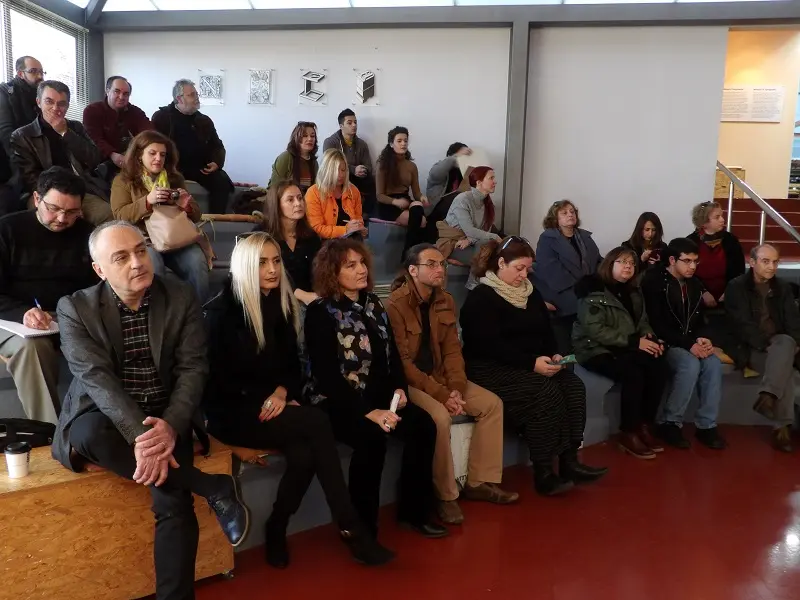

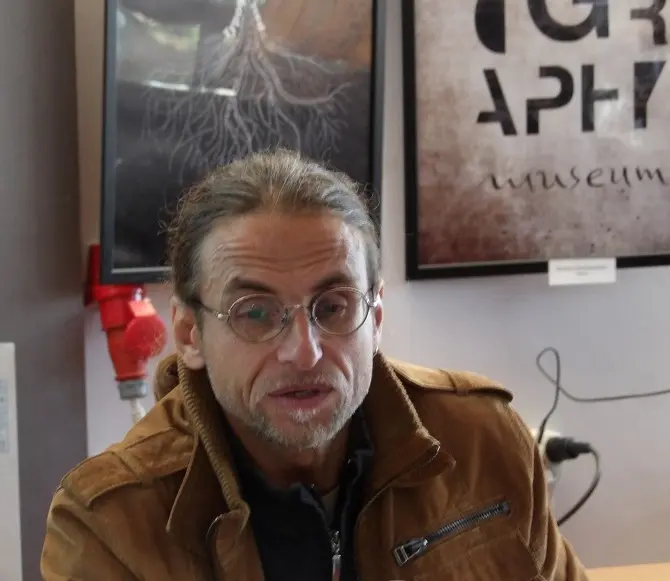
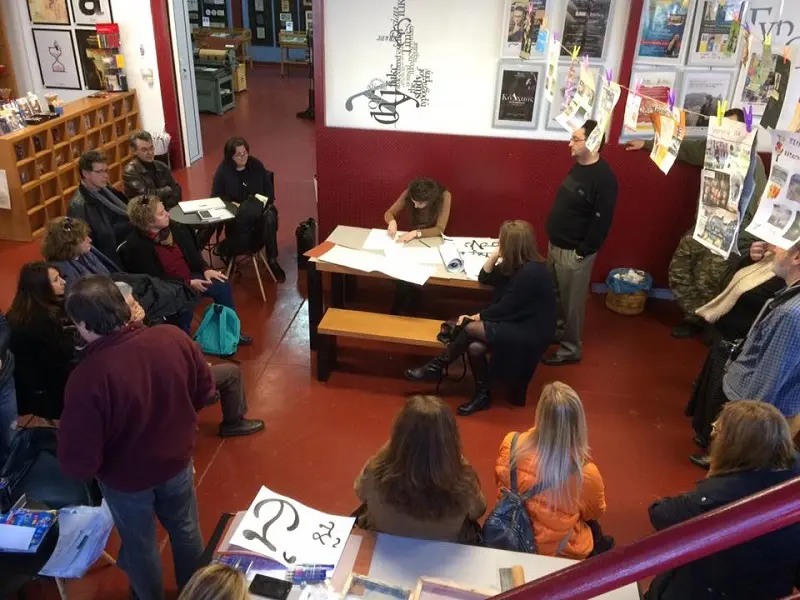
"Typography of the Renaissance meets Cretan Literature through Street Art" was the theme of the conference that was hosted on Saturday, January 14, 2017 at the Museum of Typography.
The conference was jointly organised by the Office of Secondary Education of Chania, the Department of Graphic Design of the School of Art Studies of the Higher Technological Institute of Athens and the Museum of Typography.
The conference program included lectures on the "History of Greek writing and printing" by George Matthiopoulos, professor in the Department of Graphic Design of the Higher Technological Institute of Athens, and the "History of Street Art" by professors of the Technical Highschool of Akrotiri Chanion, Olga Verykaki and Anthony Kampourparisis.

As it became known, through the creation of a Regional Network of Cultural Affairs in Crete, high school students will have the opportunity to learn about Byzantine calligraphy and the incomparable Greek font "Grecs du Roi". The students will select public areas in towns and villages of Crete and they will either paint or stick to the walls couplets from the famous Cretan literature works "Erotokritos" and "Erofili". The couplets will be created by the Graphic Design Department students, using the font Grecs du Roi, and will be sent to each high school.The Network involves 14 high schools from all over Crete.
The aim is poetry and typography to blossom throughout the island of Crete the first week of May 2017, when the International Conference of the Association of European Printing Museums will be hosted at the Museum of Typography in Chania.
During the Christmas holidays, the Museum of Typography will be open on Thursday, December 22 and Friday December 23, also from Tuesday, December 27 to Friday, December 30th and from Monday 2nd of January to Thursday, the 5th of January. Opening hours 10 am to 3 pm
Visit the unique in Greece, Museum of Typography, which is dedicated to the art that changed the course of history. It is located near the city of Chania, at the the Industrial Park of Souda. Discover it's collections and travel through the history of Typography and Printing.
The Museum will be closed on public holidays (24, 25, 26, 31 December and January 1st).
For group visits, make an appointment at tel. +30 28210 80090 or mobile +30 69 47 72 70 77 Monday to Friday 11 a.m. to 3 p.m.
Merry Christmas and a happy New Year!
Aepm annual conference 2017
11-13 May 2017
The Museum of Typography
Chania, Crete (Greece)
The conference will look at various questions concerning the ways in which collections of printing heritage materials become museums:
It will take place from 11 to 13 May 2017 at the Museum of Typography, with sessions at the Centre for Mediterranean Architecture (located on the old harbour front of the town of Chania), the Mediterranean Agronomic Institute and the Regional Press Institute (a purpose-built conference centre in the beautiful Crete countryside, a 20 minute coach ride from the town).

Centre of Mediterranean Architecture, also known as the Grand Arsenal, on Chania’s old harbour front.

The Regional Press Institute.
Hosted by the Museum of Typography, an independent printing museum at Chania on the beautiful island of Crete, it will also offer an ideal opportunity to discover some aspects of Greek printing heritage with the help of several distinguished invited speakers:
Yiannis Garedakis, founder of the Museum of Typography (Greece)
Introduction
Yannis A. Phillis, Technical University of Crete (Greece)
Printing museums: records of civilization
Alan Marshall, AEPM, former director of the Musée de l’imprimerie et de la communication graphique (France)
How print became heritage: 150 years of printing museums
Konstantinos Staikos, architect, book historian and researcher (Greece)
Practising Greek Typography (15th – 18th century)
Georgios D. Matthiopoulos, Technological Educational Institute of Athens (Greece)
The Grecs du roi meet early Cretan literature in a Street Art performance throughout Crete: a school project
Gerry Leonidas, vice-president of ATypI, associate professor at the Department of typography and graphic communication (UK)
Research-based design: integrating archives in a practice-based discipline
Guy Hautsebaut, in charge of the collections of the Plantin-Moretus Museum (Belgium)
Museum Plantin-Moretus: storytelling for a new audience with respect for a fragile collection
Jürgen Bönig, chair of the Zeichen der Welt e.V. (Germany)
From collection to museum: J. J. Augustin Glückstadt, Hamburg, New York
Patrick Goossens, collector of historica printing equipment and independant scholar (Belgium)
Collecting and the true craft of historic printing technology
Klimis Mastoridis, University of Nicosia (Cyprus)
Making (printing) history in Cyprus: a museum waiting to be made?
Niki Sioki, University of Nicosia (Cyprus)
Outside the printing museum: printed ephemera in Cyprus local museum collections
Sonja Neumann, Deutsches Museum Munich (Germany)
Printing heritage and the information age: collecting, preserving and exhibiting as a future challenge for printing museums
Sue Walker, Department of typography and graphic communication (UK)
Using the archive: material aspects of text
Anastasios E. Politis, Hellenic Union of Graphic Arts and Media Technology Engineers (Greece)
Typography revisited: the importance of typography in modern visual communication
The Museum of Typography is located in the small town of Souda, a suburb of Chania in Crete (Greece).
Park of Local Industries Building, 13-03
Souda GR-73200
Phone: +30 28210 80090
Email: info@typography-museum.gr
The city of Chania is built on the ruins of ancient Kydonia, which according to mythology was founded by king Kydon, son of Minos.
Kydonia, up to the late 7th century A.D., was one of the most important cities of Minoan Crete and its harbour was the crossroad of three Continents.
Through the ages the city was conquered by Romans, Byzantines, Venetians, Turks, Egyptians, and Arabs, until the end of the 19th century, when Crete became autonomous. Chania – as well as the rest of Crete – was liberated and united with independent Greece in 1913.
Chania’s wonderful mixture of Eastern and Western civilisations can be discovered in the alleys of the old city and the emblematic Venetian Port.
The nearest airport is Chania international airport, 10 km from the city of Chania. It is served by Aegean Airlines, Ryanair, Transavia, Easyjet, Germanwings, SAS etc. ( See more direct flights to Chania here )
The airport is served by public bus regularly. The duration of the trip to the city centre is 30 minutes and costs 2,5 euros.
The other airport is Heraklion international airport, the largest in Crete, which is located 180 km from Chania, and is served by Aegean Airlines, Austrian, Easyjet, Transavia, Germanwings, etc. From Heraklion, there is Public Bus every hour, the duration of the trip is approximately 3 hours and costs 15,10 euros.
If no convenient direct flights are available to the Cretan airports, there are many flights to the largest airport in Greece, Athens international airport. From there you can take a transfer flight to Chania Airport with Aegean Air or Ryanair.
It is well worth lookng into the cost of flights early as May is already the beginning of the tourist season. Booking well in advance can be advantageous, as can last minute deals if airlines put on extra flights to cope with demand. But there are no hard and fast rules…
You can also take the ferry from Athens (port of Piraeus) to Chania (port of Souda), using Anek Lines or Blue Star Ferries. The ship departs daily at 21:00 and arrives at Chania at 06:00. There is local bus service from the port of Souda to the city centre every 20 minutes and it costs 2 euros.
Accommodation is not included in the conference fee. But the conference organisers have made special arrangements with four hotels at the city centre of Chania, for the period 11/5 – 14/5/2017. The special conference rate for a room includes breakfast and all the taxes.
Reservations can be made by phone or email mentioning the name: “AEPM 2017” and the offer is valid until 18/04/2017.
1866 Square, Chania Town, Crete, 73100, Greece
tel.: +30 28210 90181, 92801, 92418
fax: +30 28210 94034
info@arkadi-hotel.gr
http://www.arkadi-hotel.gr/
The special rates are: Single room 50 €, Double room 60 €, Triple room 70 €
Nikiforou Foka & Kiprou
73100, Chania, Crete, Greece
tel: (+30) 28210 51881-3-5
fax: (+30) 28210 41000
info@kriti-hotel.gr
http://www.kriti-hotel.gr/
The special Aepm rates are: Standard single 76,00 €, Standard double 86,00 €, Superior double 99,00 € , Superior double with sea view 118,00 €, Triple 145,00 €, Suite 160,00 € (for two people) or with sea view 180,00 €
Sofoklis Venizelos Sq. & 2, Str. Tzanakaki Chania | Crete island | Greece
Tel: +30 28210 52280 | Fax: +30 28210 51790 |
info@kydonhotel.com
www.kydonhotel.com
Special Aepm rates are: Single Room Side square or Mountain View 84,00 € – Double/Twin Side square or Mountain View 99,00 € – Double/Twin Old Town View 113,00 € – Triple Room Side square or Mountain View 115,00 €
1866 Square, Chania, Crete 73 135 Greece
Tel: (+30) 28210 38600
Fax: (+30) 28210 38610
info@samariahotel.gr
http://www.samariahotel.gr/en/
Special Aepm rates are: Standard queen room/single 110.00 € – Standard queen room/double 130.00 € – Premium king room /single 120.00 € – Premium king or twin room/double 140.00 € – Superior king room/single 150.00 € – Superior king or twin room/double 170.00 €
Besides the large hotels at the city centre, there are also a great number (literally hundreds) of smaller traditional guesthouses for all budgets, inside the old city of Chania and many large and small hotels outside the city, near the famous beaches of Chania.
For more information about the conference and the registration form please visit the AEPM website.
Speakers who are making slide presentations should check the compatibility of their files (PDF, PowerPoint, etc.) with the Museum of Typography in advance.
The importance of communication and extroversion for the Greek and European museums was the most stressed subject at the conference that held Monday, November 28 at the National Archaeological Museum in Athens, Greece.
The conference, entitled "rewarding innovative and novel museums in Europe by the organisation European Museum Forum, Awards EMYA 2016. The Greek and International Experience" held in the auditorium of the archaeological museum of Athens. Amongst the participants were museologists, scientists and museums specialists, who exchanged ideas and opinions, of the subject of the museums at the new era.
The "Museum of Typography John and Helen Garedakis", which for 2016 had the honorary nomination for "European Museum of the Year" actively participated in the workshop, together with representatives of museums from all over Greece and Europe. Director, Elia Koumi, spoke about the importance of the Museum of Typography, and its double significance -as exhibition place but also as a cultural place where important cultural events are organised. She also talked about the museum' s uniqueness, and this year's experience participating at the EMYA awards 2016. At the same time, she made reference to the vision and plans of the founder and President of the Museum of Typography, Giannis Garedakis, for the future.
The conference was held to celebrate the 150th anniversary of the National Archaeological Museum in Athens, Greece.
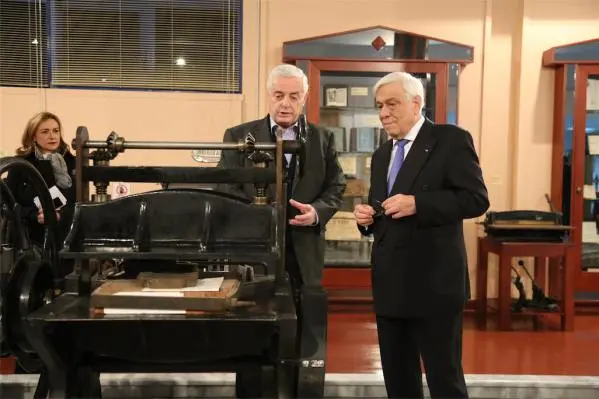

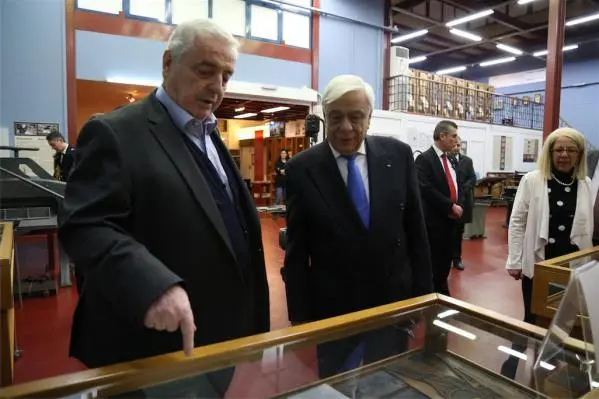
The President of the Hellenic Republic Mr. Prokopis Pavlopoulos visited the Museum of Typography on the 1rst of December 2016. The president of the Museum of Typography Yannis Garedakis, the director of the Museum Elia Koumi and the publisher of the newspaper "Haniotika Nea" Manolis Garedakis welcomed the President and guided him through the treasures of the Museum of Typography.
Mr. Pavlopoulos was particularly interested in rare exhibits, which include machines from the beginnings of typography and rare books.
In the guest book, Mr. Pavlopoulos wrote: "We express sincere admiration for this wonderful and truly national initiative. Congratulations".
The winners of the 3rd international poster contest revealed Saturday 24 of September, at the auditorium of Typography Museum, in a glorious event "feast" for typography!
At the event were announced officially -for the first time- the names of the 3 winners of the competition (first prize 1000 euros, second prize 700 euros and 3rd prize 500 euros - all sponsored by the newspaper "Haniotika Nea") and the names of the 27 contestants who received honorary distinctions.
The 3 best posters selected by the jury are:
Honorary Distinctions received: Aias Kokkalis from Chania, Dimitris Apostolidis from Thessaloniki, Agriris Athanasiadis from Athens, Igor Bendas from Athens, Silvia Casado del Rio from Spain, Ioannis Tsiamandas from Karditsa, Kamen Goranov from Bulgaria, Danae Petasi from Chania, Barbora Matlovicova & Jana Pomykacova from Czech Republic, Konstantinos Krigas from Thessaloniki, Oliveira Batajic Sretenovic Jurija Gagarina, from Serbia, Dimitris Boukos & Gerasimos Choraitis from Chalkida, Spiros Pittidis from Chania, Aggelos Gounaridis from Thessaloniki, Yan Zhou from USA-Beijing, Aliki Margarou from Thessaloniki, Polixeni Louka & Kolofotias Markellos from Thessaloniki, Maron Borbas from Hungary, Carl Godfrey from England, Spiros Kambosoulis from Thessaloniki, Matias Azevedo from Portugal, Eric Ginard from Mexico, Alison Watson from Ireland, Andrea Barkhuizen from South Africa, Michalis Bairaktaris from Athens, Georgios Kritikos from Sweden and Stoixeiagra Typography from Athens.
As always, all entries can be found in a dossier, at the gift shop of the Museum.

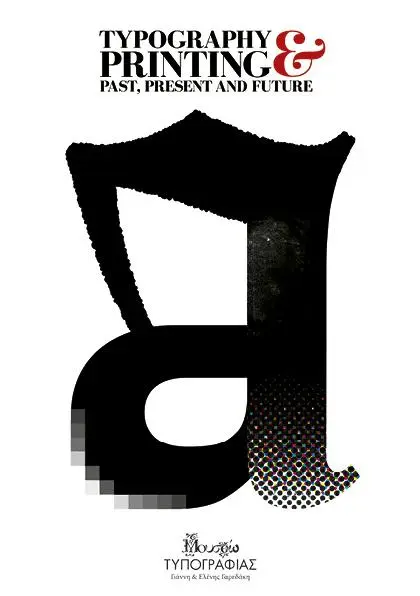


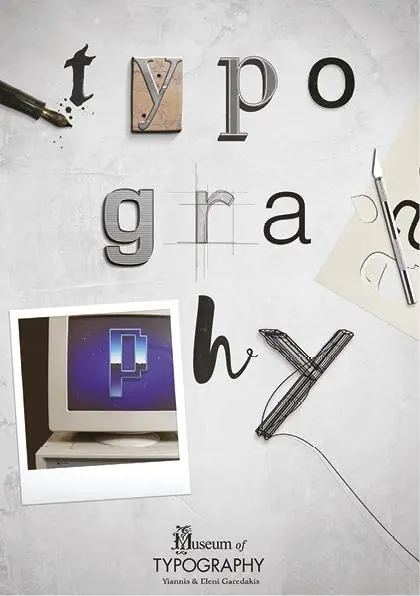

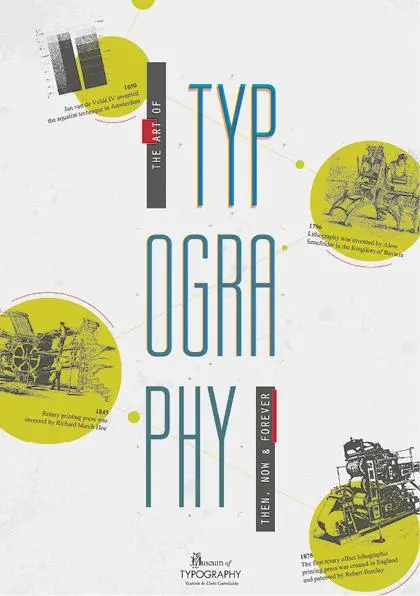
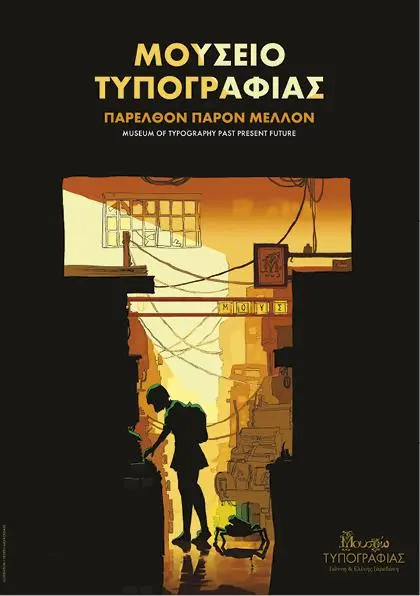


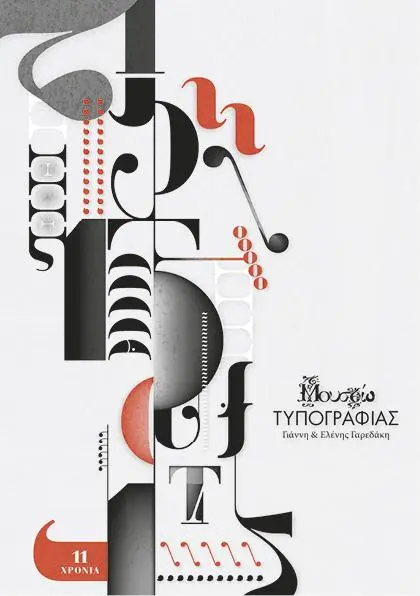

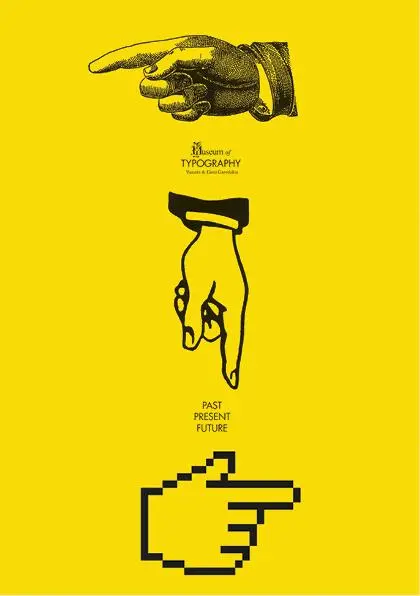


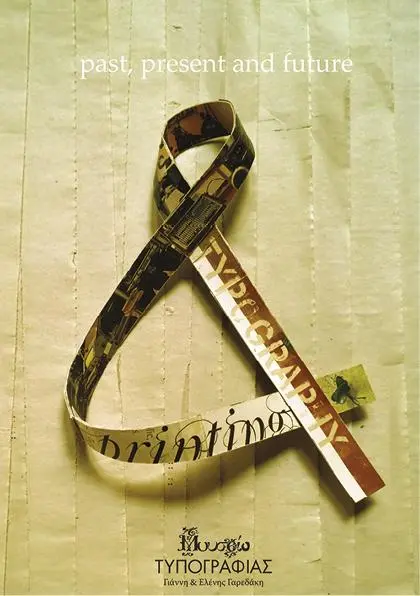
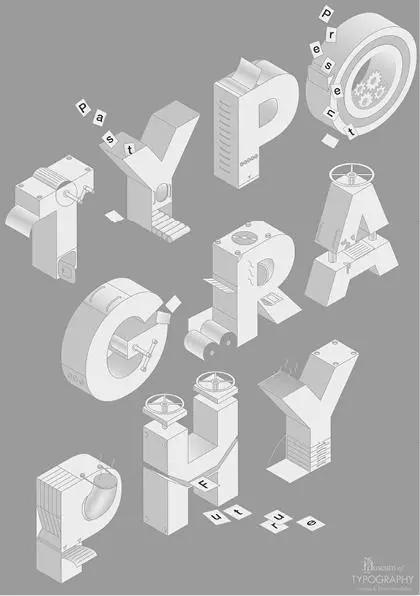

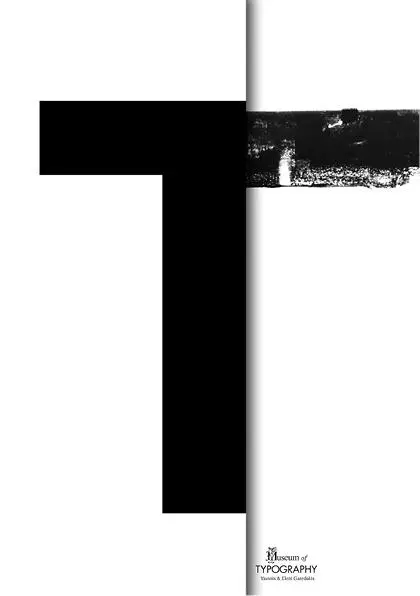
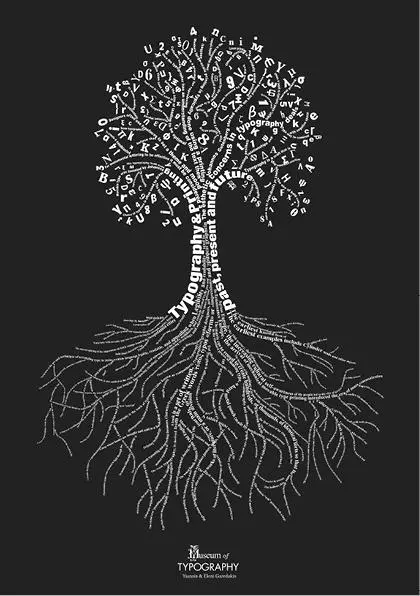
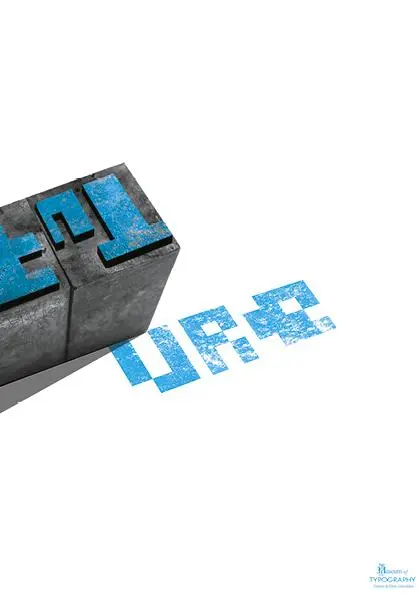
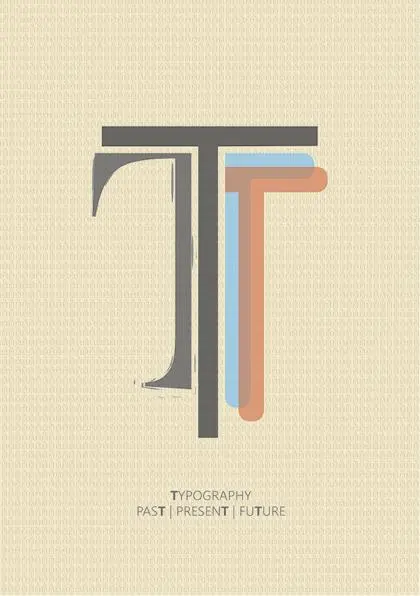

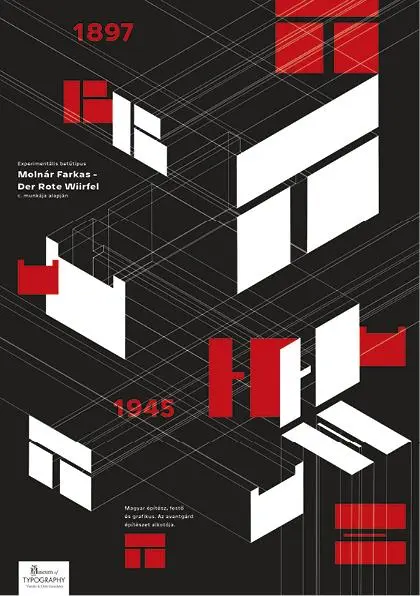
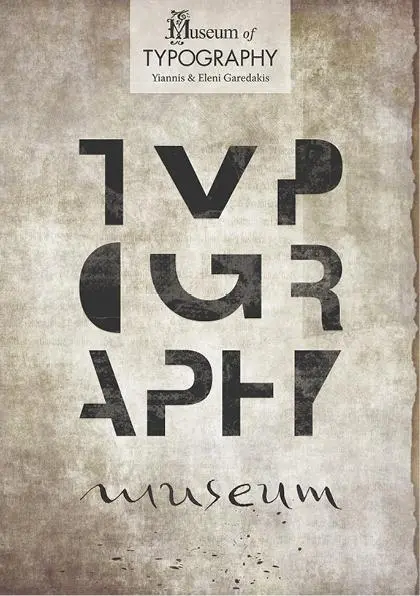
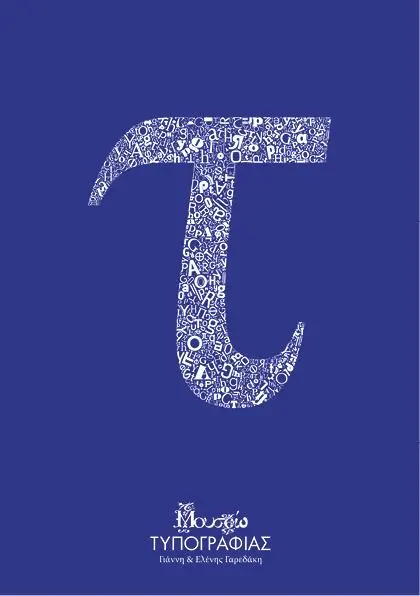

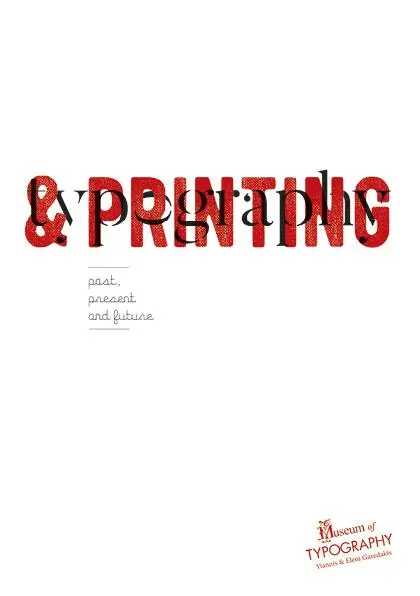


With an article about the Museum of Typography, written by the founder of the museum Yiannis Garedakis begins the volume of "Gutenberg Yearbook" for 2016. In the article is presented the history and activities of the museum, the collections and the objectives of the future. The article was written after the invitation of the curator of "Gutenberg Yearbook" Dr. Stephan Fussel, on the occasion of the Museum of Typography nomination for the "European Museum of the Year Award" 2016.
The "Gutenberg Yearbook" is a multi-page volume issued every year since 1926 from the "Gutenberg Society". It is noteworthy that for the first time in the long history of the Gutenberg Yearbook, the volume included a summary of the article in the Greek language.
Distinguished academics, writers, intellectuals, people passionated about typography and printing have left their own imprint on this .publication. Among the writers of the Gutenberg Yearbook over the years are the distinguished writer Umberto Eco, the director of the Harvard University Library Robert Dardan, the inventor of the electronic newspaper Joseph Tseikompson from MIT, Jean Martin of the University of Sorbonne, etc.
The "Gutenberg Society" is an international academic club based in Mainz, Germany, dedicated in researching and recording the history of typography and thw history of books. The club was founded on 23 June 1901, the day of inauguration of the Gutenberg Museum in Mainz, Germany - one of the most important printing museums in the world - and today has more than 1300 members in 35 countries around the world.
The 3rd international poster contest organized by Museum of Typography completed with a record number of entries. The winners of the contest will be revealed on September 24 at 7:30 pm at an event in the auditorium of the Museum.
The first three winners of the contest will receive significant prizes, sponsored be the newspaper "Haniotika nea" (1000 euro the first, EUR 700 the second and 500 third). Also, the 30 best posters selected by the jury will be presented at the exhibition and their authors will receive special honors.
Keynote speaker at the event will be Constantinos Staikos, architect, historian of the book entitled: "The origins of Greek typography." Also there will be short speeches by the members of the jury George Matthiopoulos, professor of Applied Graphic Design Department of the School of Art Studies in Athens, Alexander Kokkolas, graphic artist, professor of graphic design at the College Vakalo and Helen Stavridis, graphic designer.
This year's international poster contest had entries from literally everywhere on Earth (Colorado - Illinois - Indiana (USA), Ukraine, Italy, Iran, Russia, France, Austria, Netherlands, Madrid - Barcelona (Spain), Thailand, Cyprus, Ireland, Korea, Belarus, Slovakia, Australia, Lebanon, Oman, Poland, Serbia, Germany, Chile, Taiwan, Belgium, New York, Hungary, Colombia, Switzerland, Ecuador, Turkey, Lithuania, Great Britain, Armenia, Australia, Mexico, Poland, Croatia, Spain, Canada, Beijing, Japan, Sudan, Bulgaria, Chile, Argentina, South Africa, Venezuela, India, Pakistan, Czech Republic, Sweden, Portugal and Indonesia) and of course all over Greece (Athens, Thessaloniki, Alexandroupolis, Messina, Patras, Karditsa, Kalyvia Attica, Kalamata, Lefkada, Fthiotida, Rafina, Rhodes, Florina, Halkida, Pella, Piraeus, Pieria, Xanthi, Heraklion and Chania).
The 30 best posters of the contest will be exhibited at the auditorium of the Museum of Typography, where will be hosted the International Congress of theAssociation of European Printing Museum (AEPM), in May 2017.
After the event, the names of the winners will be announced on the website of the museum www.typography-museum.gr , the museum's facebook page, the newspaper "Haniotika Nea" and the websites of the contest's sponsors.
The Museum of Typography will participate in the European Educational Conference “Mediteranean Sea Connects Us: Progress in Education with Local Communities”, 9 - 13 December 2015, Regional Press Institute, Agioi Pantes, Chania.
